Free Nerve Endings Are Usually Found In The
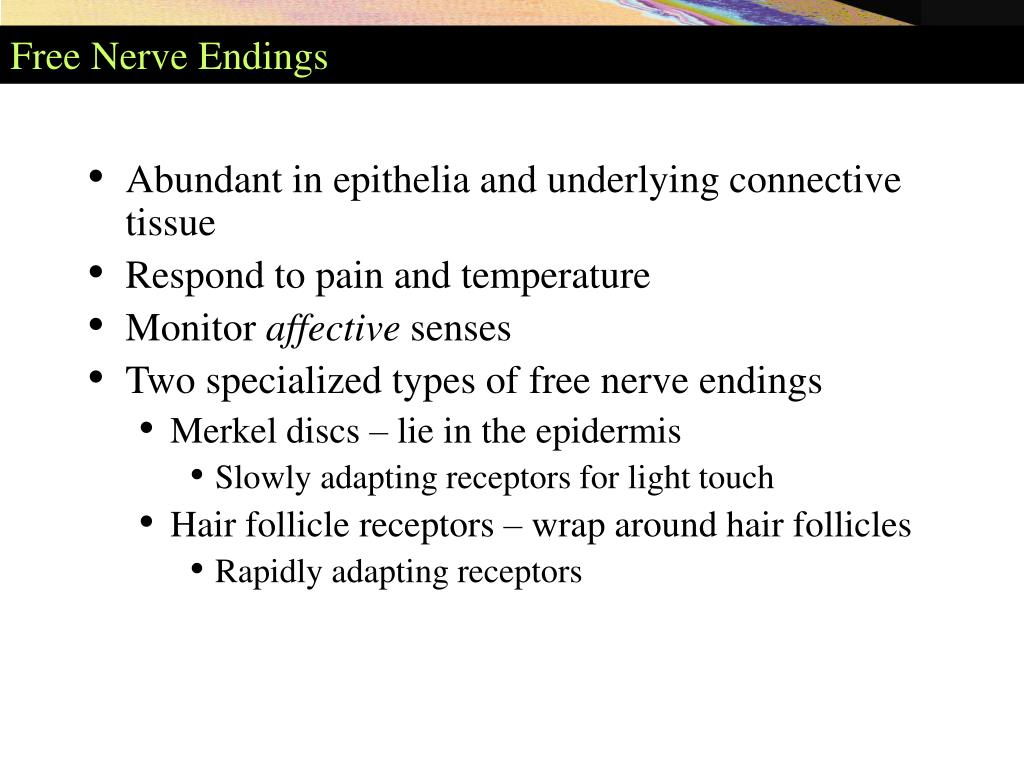
The sensation of a gentle breeze, the sharp sting of a paper cut, the throbbing ache of a headache – all are experiences mediated by tiny, ubiquitous structures within our bodies: free nerve endings. These unsheathed nerve fibers act as the body's primary sentinels, constantly monitoring the environment for potential threats and relaying critical information to the central nervous system. Understanding their distribution and function is paramount to comprehending pain, temperature, and touch sensation.
This article delves into the widespread presence and vital roles of free nerve endings. It will explore where they are commonly found within the human body, highlighting the diverse tissues and organs that rely on these sensitive detectors. We will examine the types of stimuli they respond to, the implications of their malfunction, and the ongoing research aimed at harnessing their potential for therapeutic interventions.
The Ubiquitous Sensors: Where Free Nerve Endings Reside
Free nerve endings are far from being localized structures. Instead, they boast a widespread distribution throughout the body. Their presence is vital for detecting both external and internal changes.
Perhaps most notably, free nerve endings are abundantly found in the skin, specifically within the epidermis and dermis. These endings are responsible for detecting a wide array of stimuli, including temperature variations, mechanical pressure (touch), and noxious stimuli (pain).
They are not evenly distributed across the skin's surface. Areas like the fingertips and lips, which are highly sensitive, possess a higher concentration of free nerve endings compared to less sensitive regions such as the back.
Beyond the Skin: Internal Distribution
The presence of free nerve endings extends far beyond the skin's surface. They are crucial for internal sensation and maintaining homeostasis within the body.
The cornea of the eye, devoid of blood vessels, relies heavily on free nerve endings for pain and touch sensation. These endings are incredibly sensitive, triggering protective reflexes like blinking in response to even the slightest irritation or foreign object.
Free nerve endings are also found in mucous membranes lining the respiratory tract, digestive tract, and urogenital tract. They contribute to detecting irritants, temperature changes, and mechanical stimuli in these sensitive areas.
Furthermore, free nerve endings innervate visceral organs, though to a lesser extent than the skin. While the exact role of these endings in visceral sensation is still being researched, they are known to contribute to pain perception and the detection of internal organ dysfunction.
It's important to note that free nerve endings are generally absent in the brain itself. This is why brain surgery can be performed without causing the patient pain, though the scalp and other surrounding tissues certainly contain these nerve endings.
Types of Stimuli Detected
Free nerve endings are not specialized for a single type of stimulus. They are multimodal, meaning they can respond to various forms of energy, transforming them into electrical signals that the brain can interpret.
Thermoreceptors are a type of free nerve ending specialized for detecting temperature changes. Some thermoreceptors are sensitive to cold, while others are sensitive to heat, allowing us to perceive the full spectrum of temperature variations.
Nociceptors are another crucial type of free nerve ending, responsible for detecting noxious or potentially harmful stimuli. These endings trigger the sensation of pain, serving as a protective mechanism to alert us to tissue damage.
Mechanical stimuli, such as pressure, touch, and vibration, can also be detected by certain free nerve endings. These endings contribute to our sense of touch and allow us to perceive the texture and shape of objects.
Clinical Significance and Future Directions
Dysfunction of free nerve endings can manifest in a variety of ways, leading to chronic pain conditions, sensory deficits, and impaired protective reflexes. Conditions like neuropathy, often caused by diabetes or other systemic diseases, can damage free nerve endings, leading to chronic pain, numbness, or tingling sensations.
Understanding the intricate workings of free nerve endings is crucial for developing effective treatments for pain management. Researchers are actively exploring novel therapeutic strategies that target these nerve endings to alleviate chronic pain without the side effects associated with traditional pain medications.
Furthermore, advances in biomedical engineering are leading to the development of artificial skin and prosthetic devices that incorporate sensors mimicking the function of free nerve endings. These technologies have the potential to restore sensory function to individuals with limb loss or sensory impairments.
Ongoing research is focused on identifying specific molecular targets within free nerve endings that can be modulated to control pain and other sensory experiences. This includes investigating the role of ion channels, receptors, and signaling pathways involved in the transduction of stimuli into electrical signals.
The investigation into free nerve endings continues to hold promise. It may unlock better treatments for chronic pain and lead to innovations in sensory prosthetics.
Conclusion
Free nerve endings are vital components of our sensory system. Their widespread distribution throughout the body enables us to perceive a diverse range of stimuli, from gentle touch to intense pain. A deeper understanding of these structures is paving the way for new therapies and technologies aimed at improving human health and well-being.

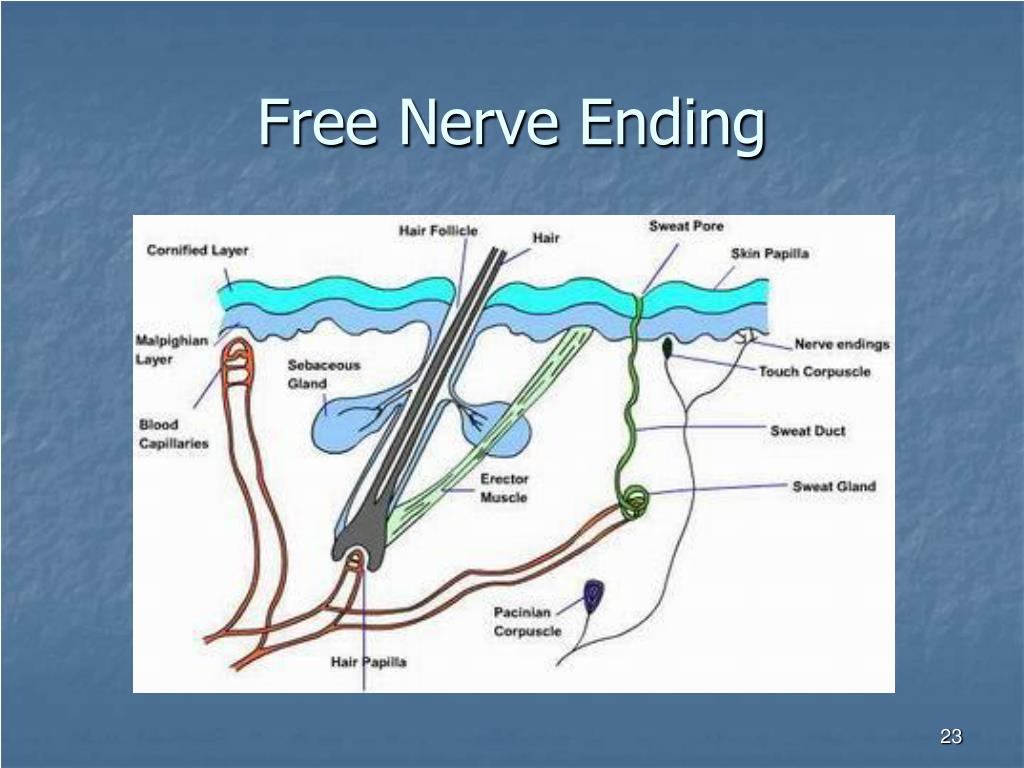
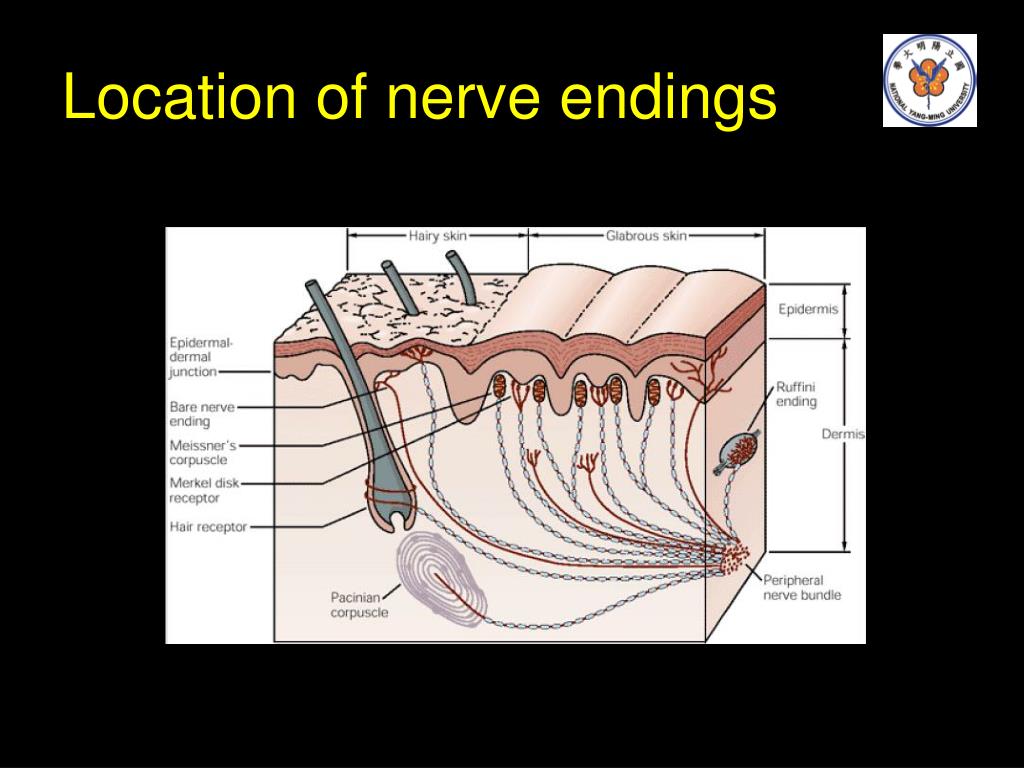



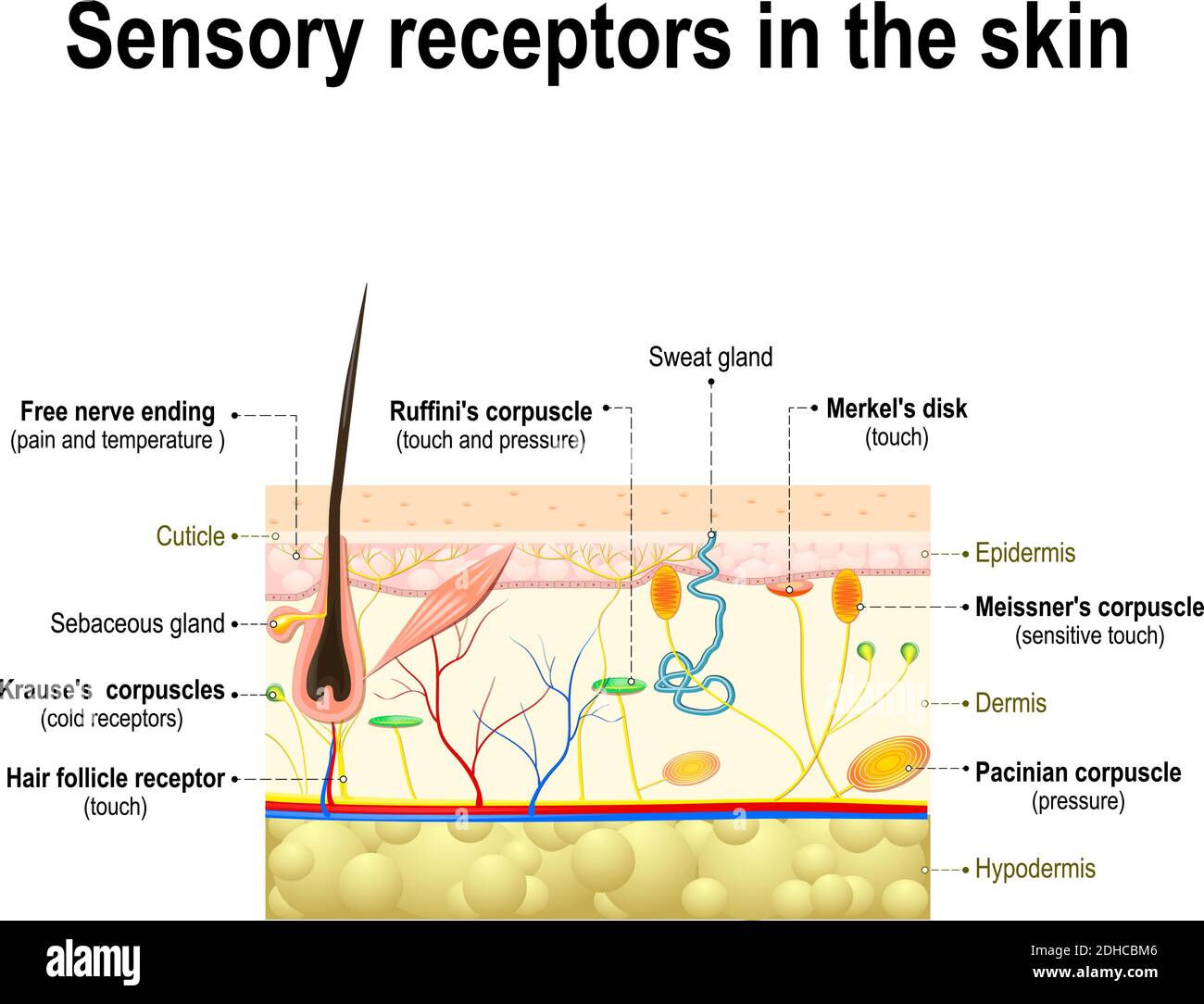
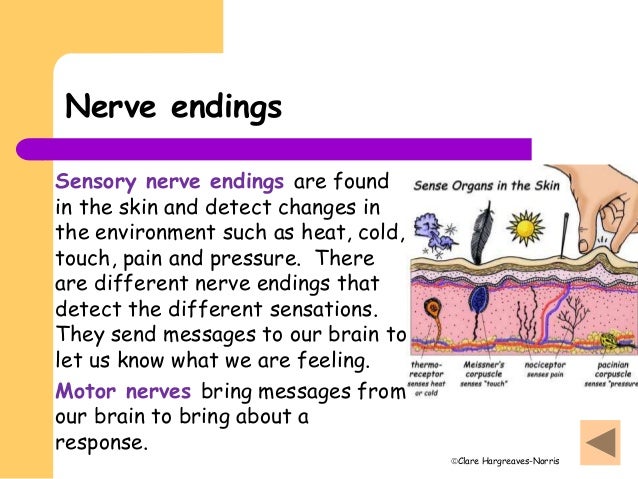





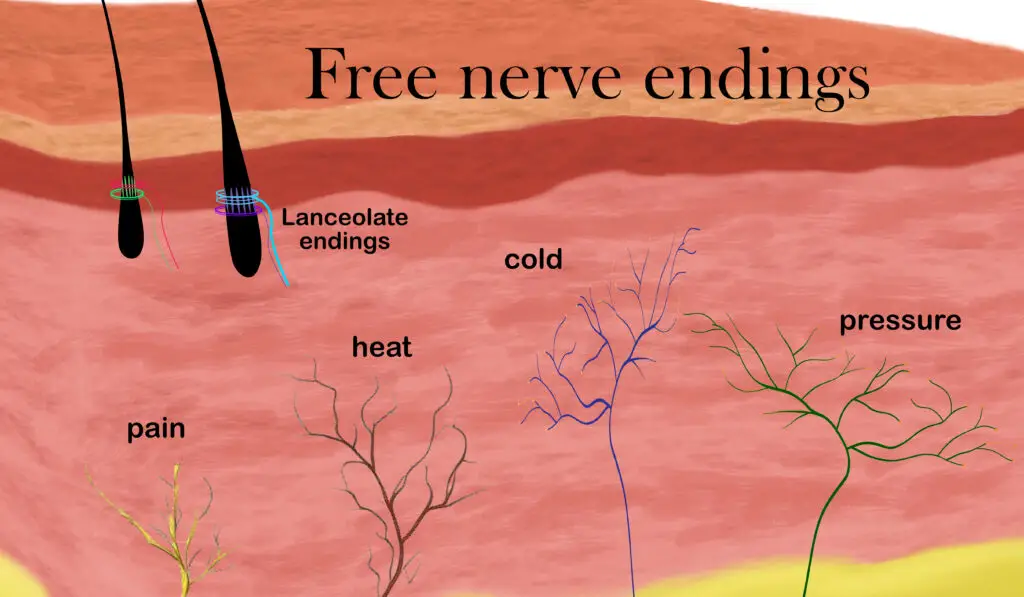
+NERVE+ENDINGS.jpg)



